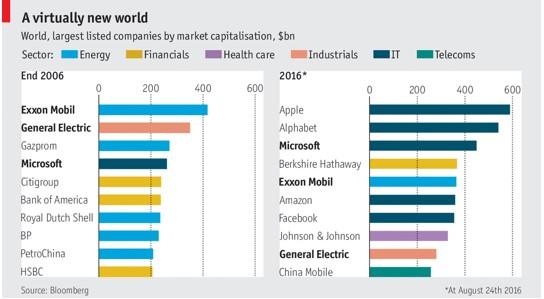
A new data-driven view of the user
In the digital age, the adoption of data-driven and AI-driven technology can make the difference between successful businesses and those that see their market share decrease year after year.
At a time when traditional companies are losing market share compared to new entrants, it is convenient to look at what these new companies, which appear overnight ready to take over the world, are doing differently.
One thing that new entrants, and especially the most successful ones (unicorns), have in common is that they make an intensive use of new technologies. As entrepreneur Naval Ravikant once said, "Your company may not be in the software business, but in the future, a software company will be in your business." Believing that technology companies don’t belong to our field of competence is a mistake that we can pay dearly. Therefore, the first lesson that will help us to survive in this new era is stop considering Amazon, Netflix, Tesla, etc. as “technology companies”, and start recognizing them as what they really are: retail, media or automotive companies that have decided to develop their business in a different way. Specifically, using the full potential of technology.
The intensive use of technology, and especially data-driven and AI-driven approaches, is what allows these kinds of companies to create a disruption in the market that shoots up their market share. Never before have traditional players had so little certainty about their position in the market. You only need to see the evolution of the ranking of the world's leading companies to understand the importance of this phenomenon. (Note: in the graphic below, these types of companies are still grouped in the “IT” sector; however, we prefer to place them in the rest of sectors. They are “sectorial big tech”).

This event is especially notable in B2C sectors, which have at hand huge amounts of data and information on users and on the market. However, nowadays, underutilization of all these data is still very common, generally due to ignorance.
In fact, one thing new entrants have been particularly good at is using as much data as possible about their users, which enables them to provide a higher value that would otherwise be impossible to achieve. Among the examples of behavior observed in both new entrants and “sectorial big tech”, we can find that:
- They compile data to obtain knowledge: from stores and loyalty apps to supply chains and after-sales service, companies must capture all interactions with users to start the journey to become a data-driven enterprise.
- They achieve truly relevant experiences for the user: beyond user segmentation, data-driven competitors get to engage customers in a personalized and consistent way at all contact points. In this sense, it is crucial to reduce or eliminate the conflict that still exists between online and in-store shopping; users are multichannel and therefore expect a fluid and consistent experience through any channel.
- They maintain a 360 view of the user: it is an essential premise to achieve the degree of customization mentioned in the previous point. We must have a single user profile, without duplications and with information updated in real time. This information is centralized in a single system to later use these data and improve customization, communication, increase sales and, ultimately, improve the shopping experience.
- They are pioneers in market trends: by integrating predictive analytics to obtain more information about the market, data-driven competitors lead each of the markets in which they operate, instead of reacting as the rest of companies do.
- They enrich data thanks to external sources: a data set alone, no matter how detailed, does not include all the behavioral or transactional data necessary to build a single comprehensive view of the customer. That's why data enrichment practices are crucial to provide customized experiences and getting valuable insights.
- They provide a quality after-sales service: thanks to the 360 vision of the user and the use of chatbots with Natural Language Processing (NLP), companies manage to optimize the customer or user services for common queries; that allows agents to focus on critical tasks in which they can add an extra value to the user.
- They predict the Churn Rate: predictive analytics uses different statistical techniques such as data mining (pattern recognition) and machine learning (ML) to predict the probability of future events by analyzing current and historical data. Thanks to this type of technique, a company that has enough volume of data from its customers will be able to identify behavior patterns of possible abandonments, segment these customers and take the appropriate measures to regain their trust.
To compete in the digital age, we must make an intensive use of new technologies, especially of the new data-driven and AI-driven approaches.
In this sense, we can learn from what new entrants and “sectorial big tech” do. The fact that they compete differently should not confuse us: if we belong to the retail sector, Amazon is as retail as we are. If we are in the media sector, Netflix is as media as we are.
These are not mere exceptions. On the contrary, they will become more and more numerous and we must learn from them how to make an extensive use of technology to compete under the same conditions. If we can obtain the data from our users and learn how to make a proper use of them to offer better shopping experiences, we will be moving towards the data-driven approach that paves the way for success.










